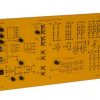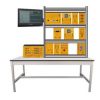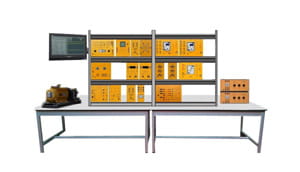The generation of electrical energy is performed almost exclusively by means of high power synchronous machines, or alternators, whose construction design depends on the type of drive, which can normally be steam, gas or water. One major limitation of the electrical power is that it cannot be stored in large quantities and, therefore, it has to be generated as the consumer needs it. The synchronous generator can be operated in isolated mode, providing power to a single consumer, or it can be connected in parallel with a constantvoltage constant-frequency grid system.
In this laboratory the main characteristics of a synchronous generator are studied as well its synchronization to the main network and its behaviour under different load conditions.
Experiments:
Generator analysis
- Winding resistance measurement
- Generator no-load test
- Generator short-circuit test
- Conventional efficiency
Load characteristics
- Active power generation.
- Inductive reactive power generation.
- Capacitive reactive power generation.
- Regulation performance analysis.
Network synchronization
- Alternator and synchronous motor operation.
- Dynamic power factor control of the grid.
Expansion:
- Paramenter configuration, fault simulation, relay response measurement and oscillograph recording for the
following protections:
- Overcurrent protection
- Over-voltage and under-voltage protection
- Over-frequency and under-frequency protection
- Unbalanced load protection
- Stator-earth fault protection
- Reverse power protection
- Generator differential protection















